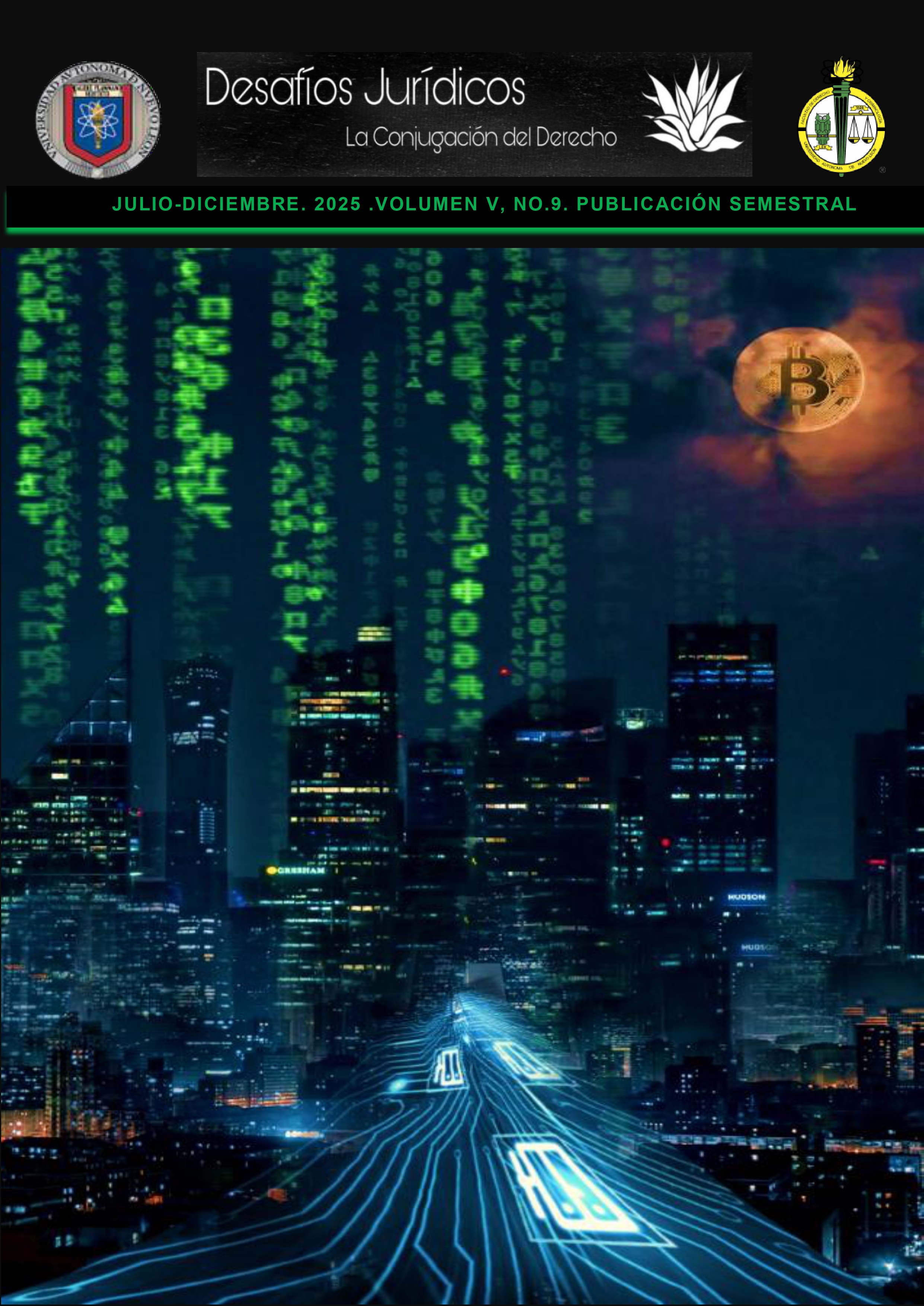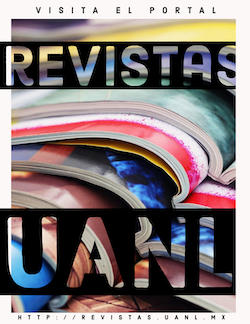The New Technologies in Access to Information
The practice of open government in the current public administration in Mexico.
DOI:
https://doi.org/10.29105/dj5.9-171Keywords:
Open Government, Public Administration, Information and Communications Technology, Transparency, Accountability, Organization for EconomicAbstract
This article prioritizes the analysis of the use of new information and communication technologies in the current federal public administration of Mexico as a variable to achieve better results and outcomes for an Open Government. The methodology employed involved a basic study with documentary research and exploratory and correlational scope, using a descriptive and qualitative approach that examines scientific literature through a non-experimental research design. Documents were reviewed, with an emphasis on scientific articles describing research findings. The results highlight the importance of incorporating information technologies to achieve an open government, aiming to significantly contribute to the performance of the public sector through the integrated provision of information technologies and online services for citizens, as well as strengthening participatory elements. It was concluded that the use of information technologies improves the responsiveness of public administration and provides greater accessibility for citizens to meet their needs and receive services, indicating that Public Administration should adapt to technological advances and modify its traditional structure to build an Open Government.
Downloads
References
Berggruen, N. y Gardels, N. (2013) Gobernanza inteligente, 1° edición, Buenos Aires, Taurus.
Bovaird, T. &. (2023). Understanding public management and governance. London: Routledge.
Brito, A. (2015). Nuevas coordenadas para la alfabetización: debates, tensiones y desafíos en el escenario de la cultura digital. Cuaderno SITEAL.
Carneiro, R. Toscano, J.C. & Díaz, T. (2021). Los desafíos de las TICS para el cambio educativo. Fundación Santillana. España. Obtenido de https://www.oei.es/uploads/files/microsites/28/140/lastic2.pdf
Ceneviva, R. y Ferreira Santos Farah, M. (2012) Evaluación, información y rendición de cuentas en el sector público. Revista de Administração Pública. 46 (4) (pág. 1 – pág. 15) Versión impresa ISSN 0034-7612. Rio de Janeiro. Disponible en: http://dx.doi.org/10.1590/S0034-76122012000400005
Christian, C. J. (11 de diciembre de 2003). Open Government Fostering Dialogue with Civil Society. Recuperado el 24 de octubre de 2023, de https://www.oecd-ilibrary.org/governance/open-government_9789264019959-en.
Cleave, E., Chatwin, M., & Arku, G. (2019). One step forward, two steps back? Consultant influence on local economic development policy in Canada: One Step Forward, Two Steps Back? Canadian Public Administration, 62(1), 0. doi:10.1111/capa.12299
Cleave, et al, (2019). Defining subnational open government: does local context influence policy and practice? Policy Sciences, 52, 451-479.
Criado J. (2016). Nuevas Tendencias en la Gestión Pública. (Instituto Nacional de Administración Pública, Ed.) (1er.). Madrid.
Darin, S. (2015) Conservación del patrimonio y la identidad en la sociedad del Conocimiento, Revista Científica, Vol.2, n° 2 del 2015, Ecuador
Dawes, S. (2010). Stewardship and Usefulness: Policy Principles for Information-Based Transparency. Government Information Quarterly, 27 (4).
Estrategia Digital Nacional. (2021, 06 de septiembre). Acuerdo por el que se expide la Estrategia Digital Nacional 2021-2024. Diario Oficial de la Federación.Obtenido dehttps://dof.gob.mx/nota_detalle.php?codigo=5628886&fecha=06/09/2021#gsc.tab=0
Figueras, V. (2019). Gobierno Abierto en México: hacia una discusión realista de su factibilidad. Revista mexicana de ciencias políticas y sociales, 523-553.
Gasco-Hernandez, M. S.-A.-G. (2017). Open innovation and co-creation in the public sector: Understanding the role of intermediaries. In International Conference on Electronic Participation. Springer International, 10429, 140-148.
Gobierno de México. (6 de septiembre de 2018). Recuperado el 2024, de www.gob.mx: https://www.gob.mx/wikiguias/articulos/criterios-de-digitalizacion-de-tramites-y-servicios-digitales
Maenza, R. y Darin, S. (2016) Universidades abiertas trabajando en la innovación tecnológica y la transparencia, Revista Internacional Transparencia e Integridad, R.I.T.I. no. 2 Septiembre- Diciembre
Martín Delgado, I. (2023). La aplicación del principio de transparencia a la actividad administrativa algorítmica. En E. Gamero Casado (dir.) y F. L. Pérez Guerrero (coord.), Inteligencia artificial y sector público: retos, límites y medios, (pp. 131-194). Tirant Lo Blanch.
Mendieta, M. V. (2010). En Gobernanza Democrática y Fiscalidad: Una reflexión sobre las Instituciones. En M. V. Mendieta, La democratización de la Adminsitración Pública (págs. 81-118). Madrid: Tecnos.
Naser A. y Concha G. (2011) El gobierno electrónico en la gestión Pública. Gestión Pública. CEPAL.
Norris, P. (2004). Is there still a public service ethos?Work values, experience, and job satisfaction among government workers. In J. D. Donahue & J. Nye, J. S. (Eds.), For the people-Can we fix public service? Washington, DC: Brookings Institution Press
OECD. (2016). Obtenido de www.oecd.org/gov: https://www.oecd.org/gov/Open-Government-Highlights-ESP.pdf
OGP. (14 de Noviembre de 2023). opengovpartnership. Obtenido de https://www.opengovpartnership.org/es/about/
Olivares F. (2011) Realidad Actual del Empleado Público – Problemas y Soluciones. Investigación presentada en las XVII Jornadas Nacionales de Profesionales en Ciencias Económicas
Parks, W. (1957). Open Government Principle: Applying the right to know under the Constitution. Geo. Wash. L. Rev., 26, 1.
Pintor, H. (2017). La transparencia en México: ¿hacia dónde vamos? Derecom, 23(5), En linea.
Plataforma Digita Nacional. (7 de febrero de 2024). PDN. Recuperado el 12 de febrero de 2024, de https://www.plataformadigitalnacional.org/
Ruvalcaba-Gomez, E. A. (2023). Systematic and axiological capacities in artificial intelligence applied in the public sector. Public Policy and Administration
Sandoval-Almazán, R. (2013). La larga marcha del Gobierno Abierto. Teoría, medición y futuro.
Sanmiguel, G. (2019). El Derecho protección y la regulación del uso de las nuevas tecnologías desde el Derecho Administrativo. Revista Eletrônica do Curso de Direito da UFSM, 14(1), 3-6. doi:https://doi.org/10.5902/1981369440341
Smith B. (2019), Tools and Weapons
UNDP . (2020). Digital Government in the Decade of Action for Sustainable Development. Obtenido de https://www.undp.org/es/mexico/projects/gobierno-abierto-para-los-ods
Wang, P. (2019), “On Defining Artificial Intelligence”, en Journal of Artificial General Intelligence, Vol. 10 Nº 2, pp. 1-37, https://doi.org/10.2478/ jagi-2019-0002
Weaver, R. (2017). President obama’s open government initiative. Revue Internationale des Gouvernements Ouverts, 1-10.
WJP. (11 de Noviembre de 2023). WJP Rule of Law Index. Obtenido de https://worldjusticeproject.org/rule-of-law
Downloads
Published
How to Cite
Issue
Section
License
Copyright (c) 2025 Sergio Manuel Sánchez Trejo, Karen Andrea Abad Matute

This work is licensed under a Creative Commons Attribution-NonCommercial 4.0 International License.
The authors who publish in this journal accept the following conditions:
- Authors will retain their copyright and guarantee the journal the right of first publication of their work, which will be simultaneously subject to the Creative Commons Attribution-NonCommercial 4.0 International License. That allows third parties to share the work as long as its author and its first publication are indicated in this magazine.
- Authors may make other independent and additional contractual agreements for the non-exclusive distribution of the version of the article published in this journal (eg, include it in an institutional repository or publish it in a book) provided that they clearly indicate that the work it was first published in this magazine.
- Authors are allowed and recommended to publish their work on the Internet (for example on institutional or personal pages) after the review and publication process, as it can lead to productive exchanges and a greater and faster dissemination of the published work ( See The effect of open access).







